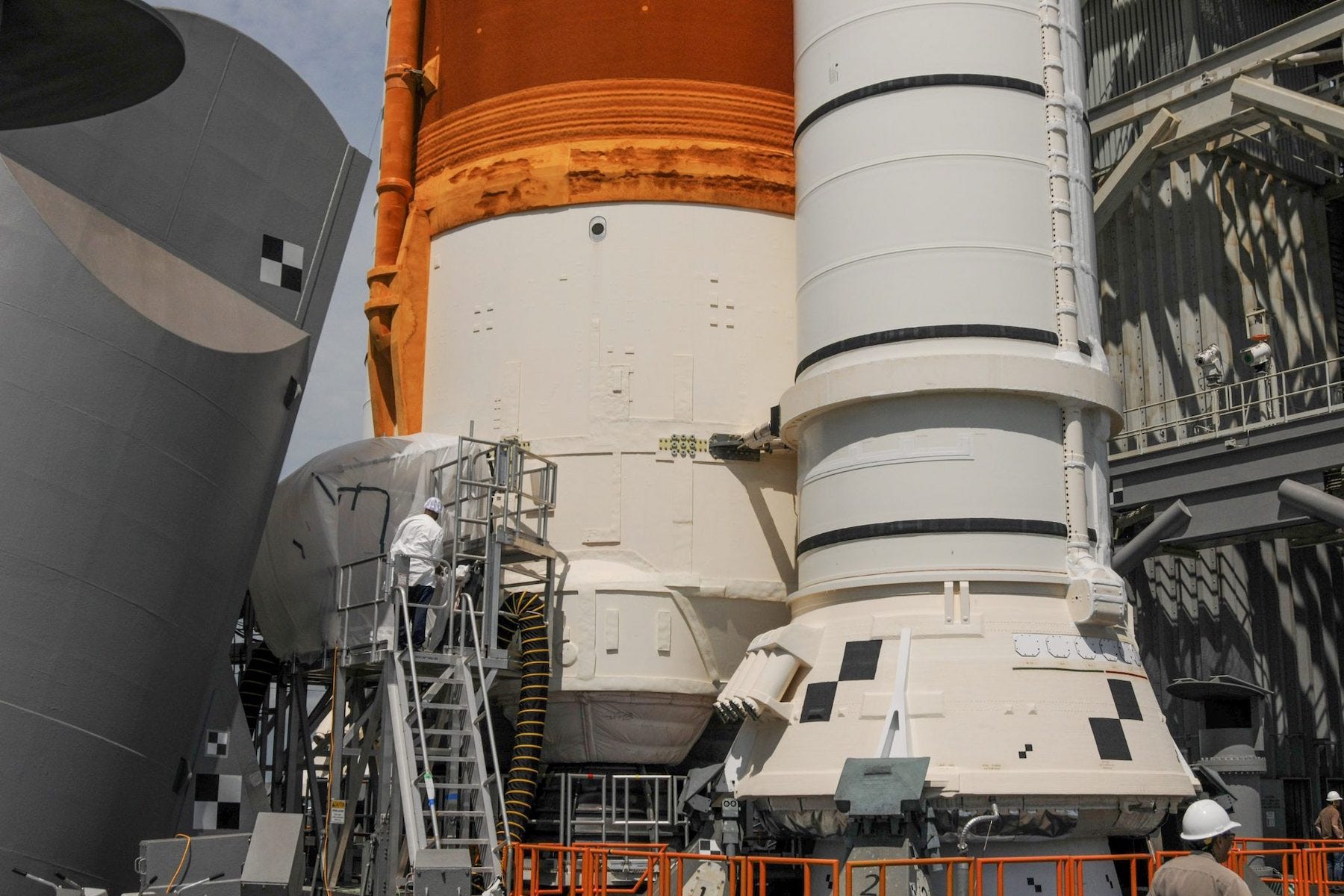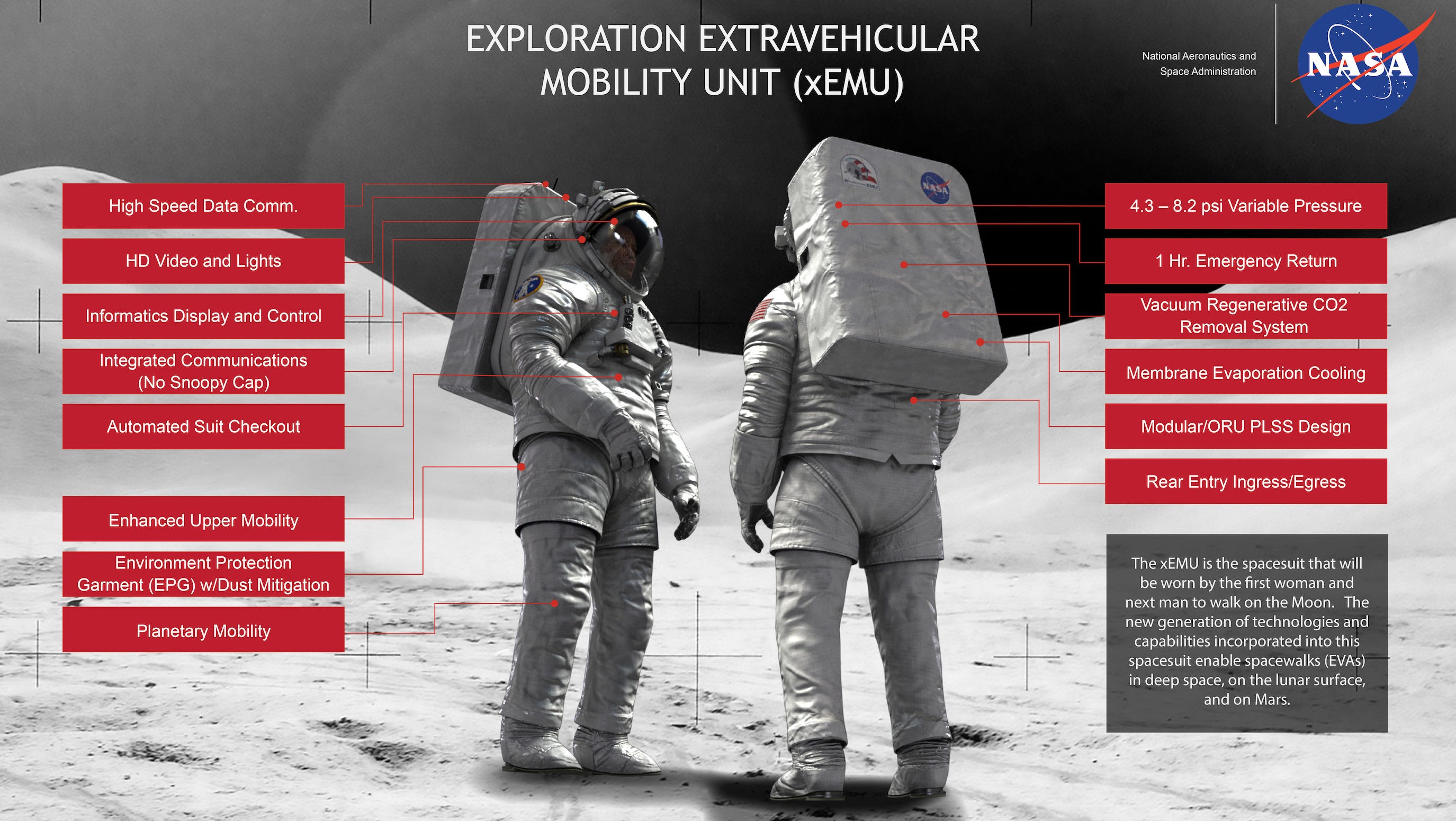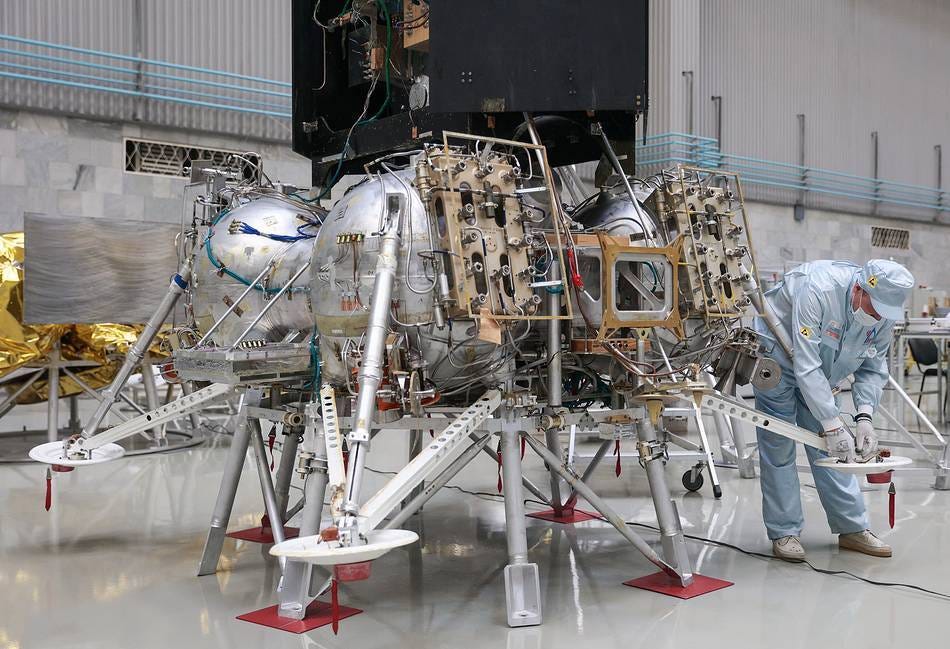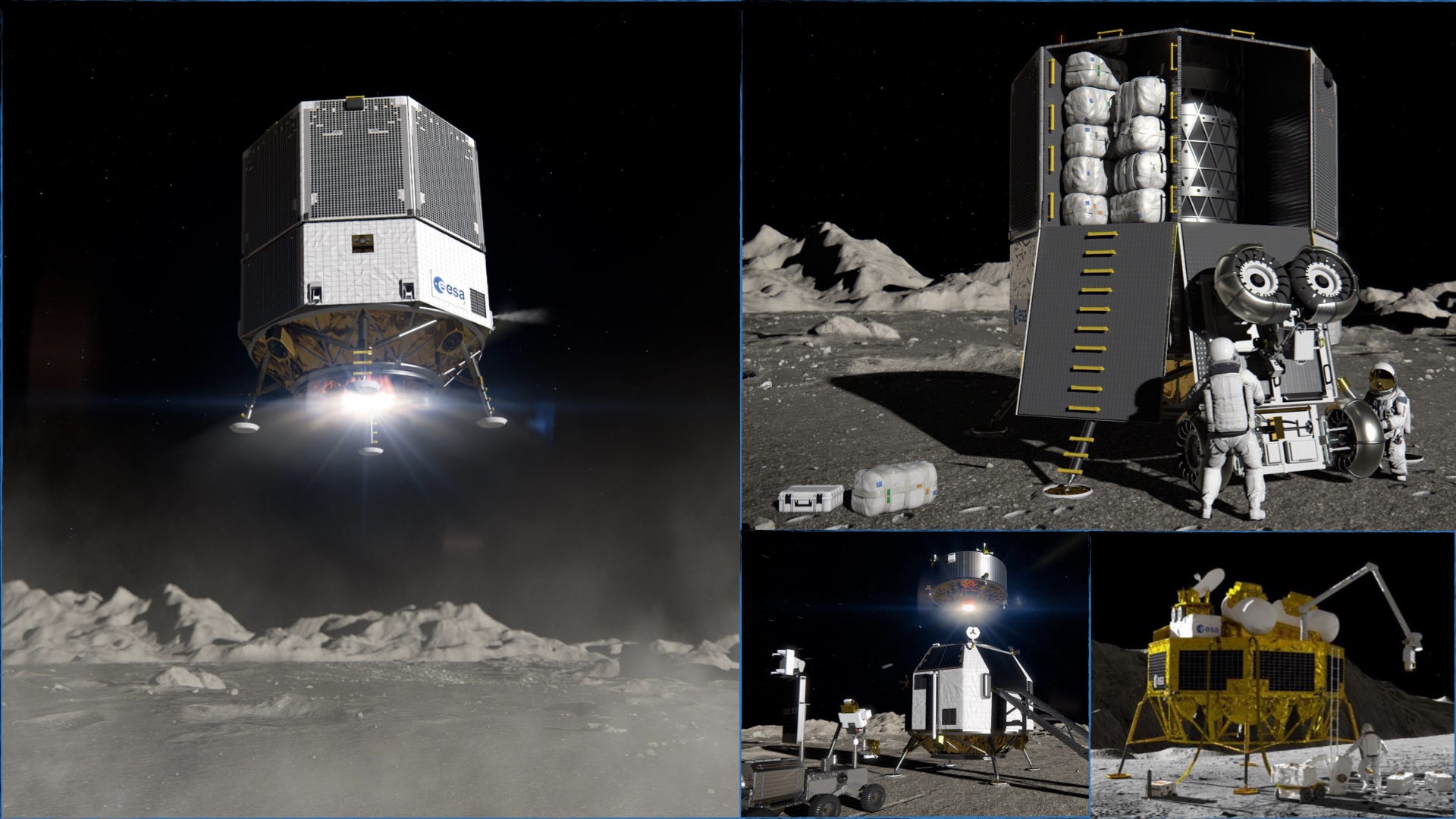Moon Monday #94: Pushing for an SLS liftoff, new spacesuits for Moonwalking, a large ESA lander, and more
NASA pushes for September launch of Artemis I
After a persistent, large hydrogen leak on the SLS rocket’s core stage forced NASA to scrub the September 3 launch attempt of the Artemis I mission to send an uncrewed Orion spacecraft around the Moon and back, the agency decided to fix the issue on the launchpad itself instead of taking the rocket back to its assembly building. Last week technicians replaced two seals on the anomalous quick disconnect interface—which feeds liquid hydrogen into the core stage—to prevent future leaks, and are now preparing to test its robustness by fully filling the rocket with super-chilled liquid propellants on September 17. Engineers are still investigating what caused the leak.

In the meanwhile, NASA is requesting the Eastern Range to re-extend the battery rating of SLS’ flight termination system, this time by 20–25 days instead of the previous 5 days for the agency to be able to target the following launch opportunities:
- September 23: Two-hour launch window starting from 6:47AM EDT, with Orion splash-landing on October 18
- September 27: 70-minute launch window starting from 11:37AM EDT, with Orion splash-landing on November 5
If said safety requirement isn’t met, NASA will have to move the SLS rocket back to its assembly building to recharge the flight termination system’s batteries, and target the October 17–31 launch window. If they do so, there’s an even higher likelihood that the batteries of five of the scientific CubeSats onboard will be unable to be retain enough charge to carry on their missions.
The first Artemis astronauts on the Moon will wear Axiom’s spacesuits
NASA has awarded Axiom Space a baseline $228.5 million contract to provide advanced, space-qualified spacesuits and associated services for the agency’s first crewed Artemis Moon landing mission mid-decade. This move follows the agency’s selection of Axiom Space and Collins Aerospace in June as bidding vendors for all Artemis missions until 2034. NASA dropped developing its own xEMU suits in favor of said commercial competitive procurement method but has made its research available to accelerate development of the new suits while reducing risk.
To many people’s surprise, Collins, who designed the Apollo suits, didn’t get selected despite its previous public showcase of progress with lunar suit concepts. On the other hand, Jeff Foust reports that Axiom remains secretive of its design other than saying their suits are based on NASA’s xEMU ones. NASA’s source selection statement notes that Axiom bid a lower price than Collins.

In any case, we do know that all Artemis lunar suits must follow NASA-defined technical capabilities and safety standards. This means the Axiom suits must support at least six two-person Moonwalks, and release less than 100 grams of notorious lunar dust into the cabin post-moonwalks for safety. NASA wants Artemis III astronauts to venture inside permanently shadowed regions on the Moon’s south pole, especially since cryogenically sampling and bringing pristine, precious lunar polar volatiles to Earth for meticulous studies is an identified key priority. The spacesuits therefore must let astronauts enter such regions, where temperatures are well below -180 degrees Celsius, and function nominally for at least 2 hours.
A whole-hearted thank you to Moon Monday’s sponsors Epsilon3, The Orbital Index and Open Lunar Foundation. Their support helps sustain this one-of-a-kind newsletter covering lunar exploration, science, commercial and policy developments from around the world.
Russia’s Luna 25 Moon lander to launch in 2023
Per Roscomos Director General Yury Borisov, the launch of Russia’s Luna 25 robotic Moon lander has been delayed until next year. Earlier this year, Russia completed thermovac (short for ‘thermal and vacuum’) tests on the fully assembled lander, complete with its eight scientific instruments. Landing-related tests that followed showed that the Doppler distance and velocity sensors underperformed, resulting in the decision to delay mission launch.

Luna 25’s instruments include an arm to sample material from 20 to 30 centimeters below the surface and then feed it to a laser spectrometer to determine elements and isotopes within. There’s also a neutron and gamma ray spectrometer to identify the composition of the subsurface. An ESA-provided navigation camera originally aboard the lander was pulled away by ESA as a response to Russia’s invasion of Ukraine. The mission’s landing site, while not truly polar due to engineering constraints, is selected at about 70° South such that underground water ice can still be detected.
On ESA’s large lunar lander proposal
The upcoming ESA ministerial council meeting in November will decide the fate of the long-proposed European Large Logistics Lander (EL3), recently formally named Argonaut. If green-lit, the large 4.5 meters wide and up to 6 meters tall robotic lander to be built by Thales Alenia or Airbus will be capable of deploying up to 1500 kilograms of payload on the Moon. Argonaut’s first launch will be no earlier than 2030, and launch every 2-3 years. Its size and delivery capacity makes it larger than any existing NASA-commissioned CLPS landers. Argonaut is being designed to be versatile; it can deploy and support large rover explorations, do sample return missions, and specifically aid NASA’s Artemis missions with cargo supplies.
While ESA originally intended for Argonaut to return any lunar samples to Earth robotically, the agency’s Director of Human and Robotic Exploration David Parker said at the LEAG 2022 Annual Meeting last month that Argonaut would help bring samples via either crewed Artemis surface missions or the NASA-led international Gateway lunar station.

Relatedly, ESA awarded a €1 million contract in early 2022 to a Thales Alenia-led consortium for developing a lunar oxygen-extractor demonstration payload intended to be aboard an Argonaut lander. Future, more advanced resource extraction and utilization machines would also be delivered via Argonaut. In the meanwhile. Russia’s invasion of Ukraine prompted ESA to look for a new ride, instead of the previous Russian Luna 27, to test their precision lunar navigation, landing and hazard avoidance system called PILOT before the critical hardware guides Argonaut.
With ESA’s recently publicly released exploration vision and strategy document called Terra Novae 2030+, which posits a trove of European lunar technologies, let’s hope that Argonaut becomes official at the November ESA ministerial council meeting.
More Moon
- After successfully conducting a trajectory correction maneuver on September 2, South Korea’s first lunar orbiter KPLO is arching its way back to the Moon for orbital capture on December 16 as planned.
- The NASA-funded and Advanced Space-led CAPSTONE spacecraft put itself in safe mode on September 8 after it detected an issue during a planned trajectory correction maneuver. CAPSTONE remains on its intended fuel-saving ballistic transfer to the Moon for orbital capture on November 13. Teams are in contact with the spacecraft, and are working towards a solution.
- Following Masten Space’s Chapter 11 bankruptcy filing, which came after the company laid off employees exclusively working on its first CLPS Moon landing, a U.S. federal court has approved on September 8 the sale of nearly all of Masten’s assets to competitor Astrobotic who made the highest bid of $4.5 million. Astrobotic also plans to hire some of Masten’s employees, and the payloads meant to fly on Masten’s CLPS flight might be transferred over to Astrobotic by NASA.
→ Browse the Blog | About | Donate ♡
